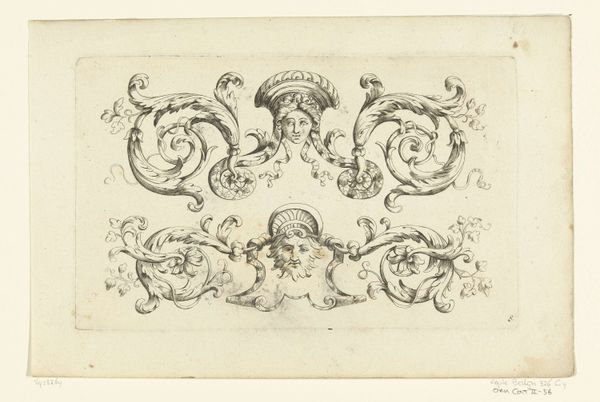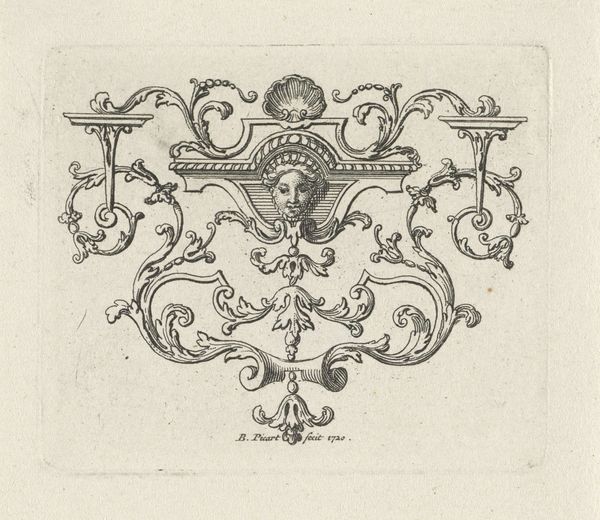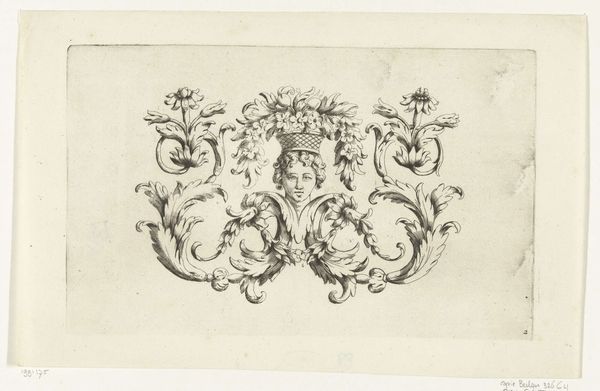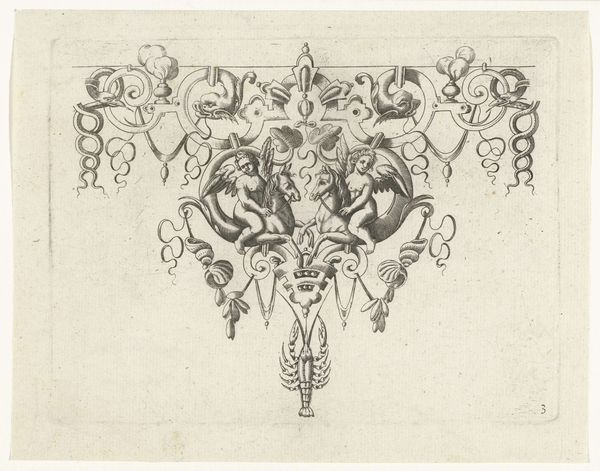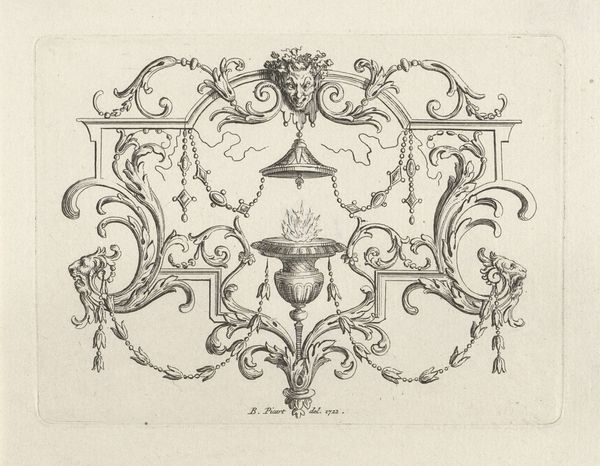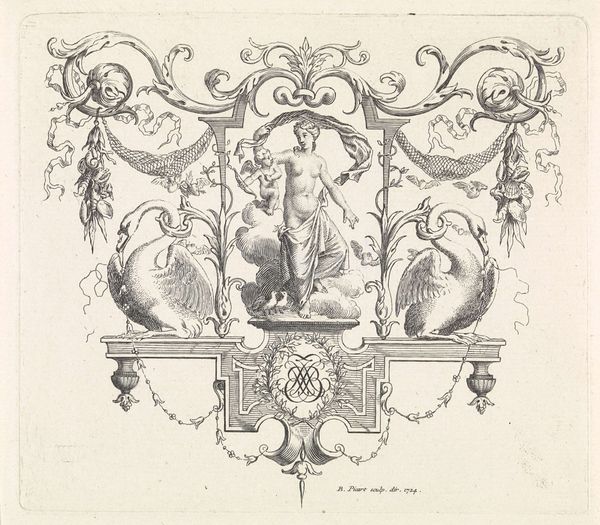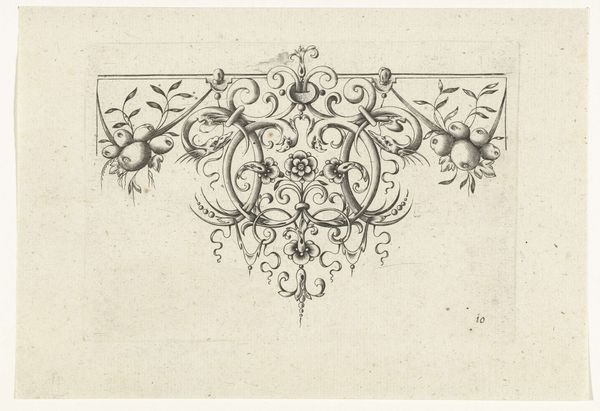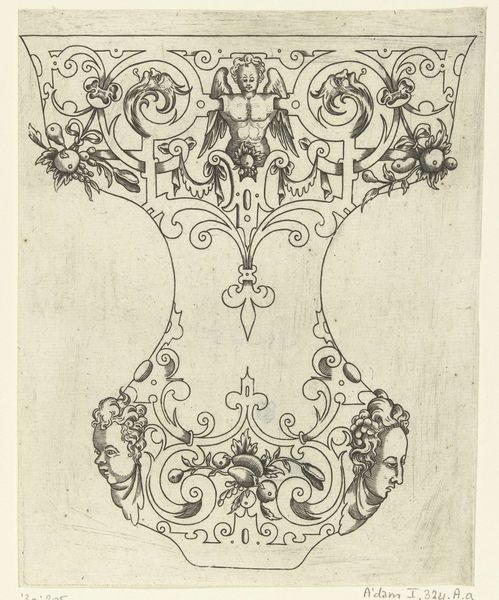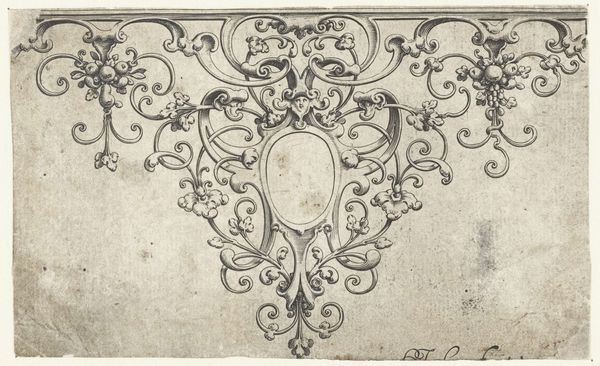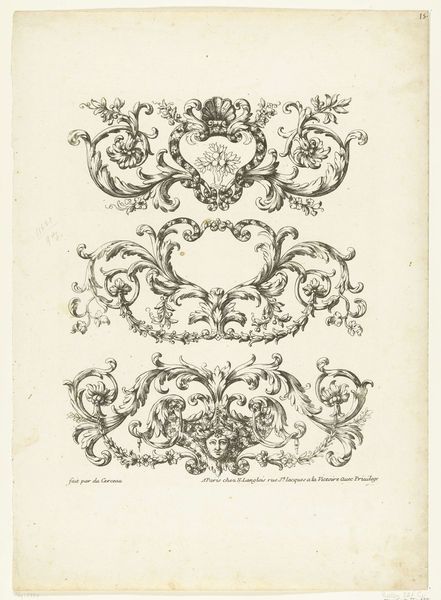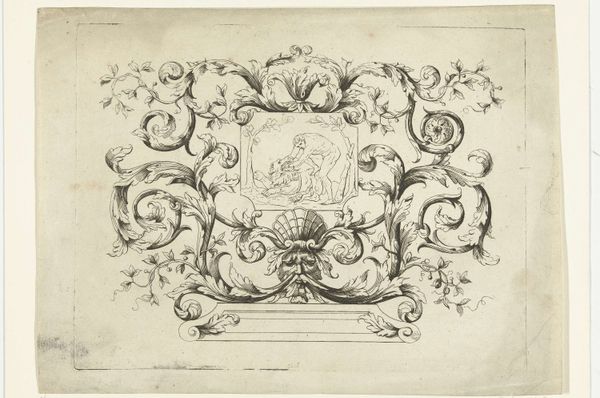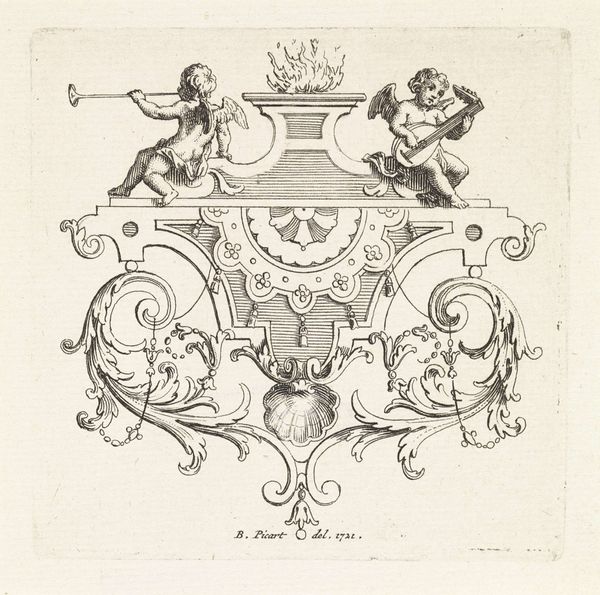
engraving
#
portrait
#
baroque
#
line
#
engraving
Dimensions: height 78 mm, width 117 mm
Copyright: Rijks Museum: Open Domain
Bernard Picart made this print, "Zittende putto tussen bladranken", sometime between 1673 and 1733 using etching. The print’s subject—a cherubic putto surrounded by foliage—is an emblem of playful innocence, popular during the Baroque period. The ornamental style references the aesthetics of the French court, where such imagery was used to decorate palaces and celebrate the aristocracy. Born in France, Picart spent much of his career in the Netherlands, contributing to the flourishing print culture. Here we see the institutional history that underpins the art world: prints like these were produced in multiples for a growing art market and were collected, traded, and used as models for other artists. The putto motif suggests a conservative cultural value. But the print also participated in a broader dissemination of images, which would ultimately challenge the traditional hierarchies of taste and patronage. Understanding Picart’s prints requires us to look at the social and economic conditions that shaped the art world of his time. This involves archival research and an examination of the networks through which artists and their works circulated. Art is always contingent on its context.
Comments
No comments
Be the first to comment and join the conversation on the ultimate creative platform.
